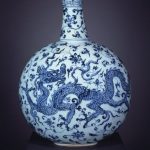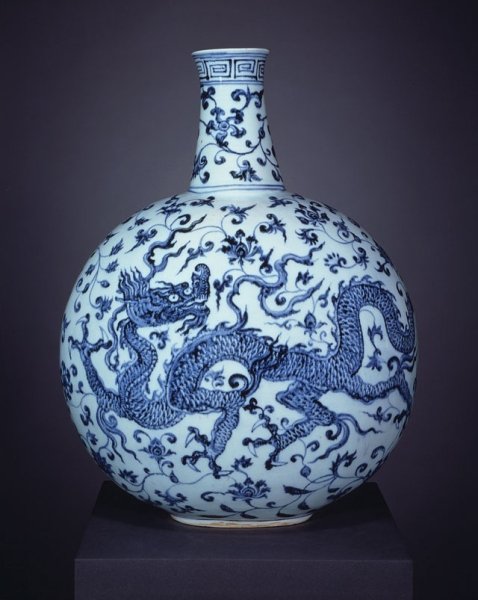Chinese Ceramics
Chinese ceramics, a pivotal art form throughout China’s history, showcases the ingenuity and creativity that has influenced artists around the world. From the delicate porcelain wares known as “china” in the West to the robust stonewares of the ancient dynasties, Chinese ceramics encompass a breadth of styles, techniques, and cultural significance. This guide provides a deep dive into the world of Chinese ceramics, exploring its history, types, notable production centers, and tips on where and how to appreciate these artifacts during your travels in China.
Table of contents
- Introduction to Chinese Ceramics
- Historical Overview
- Key Types of Chinese Ceramics
- Major Chinese Ceramic Styles
- Centers of Ceramic Production
- Visiting Ceramic Centers in China
- Tips for Buying Chinese Ceramics
- Appreciating Chinese Ceramics in Museums
- The Cultural Significance of Chinese Ceramics
- FAQs About Chinese Ceramics
- Conclusion
Introduction to Chinese Ceramics
Chinese ceramics are renowned for their quality and artistic beauty, holding a crucial place in the cultural heritage of China. The art of making ceramics in China dates back at least 20,000 years, with pottery initially appearing during the Palaeolithic era. Over centuries, Chinese artisans perfected their techniques, leading to innovations such as porcelain, which was highly prized in the international trade.
Historical Overview
The development of Chinese ceramics can be traced through several key periods, each marked by distinct advances in technology and style:
- Neolithic Period: The earliest Chinese pottery, simple and utilitarian, yet already showing regional styles.
- Shang and Zhou Dynasties: Introduction of the potter’s wheel and development of proto-porcelain.
- Han Dynasty: Advancements in lead-glazed ceramics.
- Sui and Tang Dynasties: The introduction of true porcelain and high-fired stoneware.
- Song Dynasty: Refinement of porcelain techniques and the emergence of famous kilns producing distinct wares like Celadon.
- Yuan, Ming, and Qing Dynasties: The perfection of blue-and-white porcelain and expansion in the variety of decorations and forms.
Key Types of Chinese Ceramics
- Earthenware: Generally made from clay fired at lower temperatures, resulting in a more porous and coarser material than stoneware or porcelain.
- Stoneware: Fired at higher temperatures than earthenware, stoneware is more durable and has a denser, stone-like quality.
- Porcelain: Known for its thin walls, translucent quality, and smooth surface, porcelain is fired at the highest temperatures and is characterized by its purity and resonance.
Major Chinese Ceramic Styles

- Celadon (青瓷): Celadon wares are famed for their jade-like green glazes and are primarily associated with the Longquan kilns of the Song Dynasty.
- Blue and White Porcelain (青花瓷): Starting in the Yuan Dynasty and perfected during the Ming Dynasty, this style features cobalt-blue decorations under a clear glaze.
- Famille Rose and Famille Verte (粉彩, 绿彩): These are types of colorful overglaze porcelains developed during the Qing Dynasty, known for their intricate and brightly colored designs.
Centers of Ceramic Production
- Jingdezhen (景德镇): Often referred to as the “Porcelain Capital” of China, Jingdezhen has been producing fine ceramics for over 1,700 years. The city is synonymous with high-quality Chinese porcelain.
- Longquan (龙泉): Famous for its Celadon porcelain, Longquan wares are celebrated for their thick glaze and beautiful green hues.
- Yixing (宜兴): Best known for its unglazed stoneware teapots made from Zisha clay, Yixing pots are prized by tea connoisseurs for their ability to absorb the flavors of teas.
Visiting Ceramic Centers in China
When traveling to China, visiting these centers offers a firsthand look at the art and tradition of ceramic making:
- Jingdezhen: Explore the Jingdezhen Ceramic Museum, participate in pottery-making workshops, and visit local artisans’ studios.
- Longquan: The China Celadon Museum in Longquan showcases the history and craftsmanship of Celadon ceramics.
- Yixing: The Yixing Ceramics Museum provides insights into the tradition of Zisha pottery and offers demonstrations.
Tips for Buying Chinese Ceramics
- Learn the Basics: Understanding the different types of Chinese ceramics can help you make informed choices.
- Buy from Reputable Sources: Purchase from established galleries or shops, especially in ceramic production centers where you can often meet the artisans themselves.
- Check for Authenticity: Learn to identify marks and signs of age or originality. Many contemporary pieces mimic historical styles, so it’s important to know whether you are buying a modern reproduction or an antique.
- Handle with Care: When examining ceramics, handle them gently. Look for any cracks, repairs, or imperfections that might affect the value.
Appreciating Chinese Ceramics in Museums
Many museums around the world house significant collections of Chinese ceramics. In China, the National Museum of China in Beijing and the Shanghai Museum are must-visits for ceramic enthusiasts. Internationally, the Victoria and Albert Museum in London and the Metropolitan Museum of Art in New York offer extensive collections of Chinese ceramics.
The Cultural Significance of Chinese Ceramics
Ceramics are deeply embedded in Chinese culture, symbolizing more than just artistic achievements. They reflect the social, economic, and political contexts of their times. For example, the export of blue-and-white porcelain during the Ming Dynasty illustrates the impact of Chinese aesthetics on global trade and culture.
FAQs About Chinese Ceramics
Q1: What distinguishes Chinese porcelain from other ceramics?
Chinese porcelain is known for its high firing temperature, vitrified (glassy) nature, and its ability to resonate sound.
Q2: How can I tell if a piece of Chinese ceramic is old?
Look for signs of wear, quality of glaze, imperfections in the pottery, and provenance. However, consulting an expert or relying on authentication from reputable dealers is always recommended.
Q3: Are there any online resources for learning more about Chinese ceramics?
Yes, many museums offer online databases and virtual tours. Academic journals and publications, as well as websites dedicated to Chinese art and history, can also provide valuable information.
Conclusion
Chinese ceramics offer a window into the rich tapestry of China’s history and culture. Whether you’re exploring bustling marketplaces, quiet museums, or traditional workshops, the world of Chinese ceramics is rich with beauty and tradition. As you travel through China, take the opportunity to immerse yourself in the legacy of one of the world’s oldest and most influential art forms.


